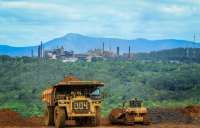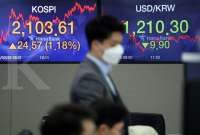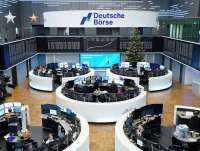CHINA - BEIJING. The slowdown in China's economy deepened in August, with growth in industrial production at its weakest 17-1/2 years amid spreading pain from a trade war with the United States and softening domestic demand.
Retail sales and investment gauges worsened too, data released on Monday showed, reinforcing views that China is likely to cut some key interest rates this week for the first time in over three years to prevent a sharper slump in activity.
Despite a slew of growth-boosting measures since last year, the world's second-largest economy has yet to stabilise, and analysts say Beijing needs to roll out more stimulus to ward off a sharper slowdown.
Industrial output growth unexpectedly weakened to 4.4% in August from the same period a year earlier, the slowest pace since February 2002 and receding from 4.8% in July. Analysts polled by Reuters had forecast a pick-up to 5.2%.
In particular, the value of delivered industrial exports fell 4.3% on-year, the first monthly decline since at least two years, Reuters records showed, reflecting the toll that the escalating Sino-U.S. trade war is taking on Chinese manufacturers.
The protracted trade war escalated dramatically last month, with President Donald Trump announcing new tariffs on Chinese goods from Sept. 1, and China letting its yuan currency sharply weaken days later.
Read Also: Gold jumps 1% as attacks on Saudi lift safe-haven bets
After Beijing hit back with retaliatory tariffs, Trump said existing levies would also be raised in coming months, in October and December.
While the two sides are set to resume face-to-face negotiations in early October, most analysts do not expect a durable trade deal, or even a significant de-escalation, any time soon.
Premier Li Keqiang said in an interview published ahead of the data on Monday that it was "very difficult" for the economy to grow at 6% or more and that it faced "downward pressure".
Traders expect a cut in the central bank's medium-term loan facility rate (MLF) as early as Tuesday, which would open the way for a reduction in the new loan prime benchmark rate (LPR) later in the week.
Several analysts said in recent weeks that China's economic growth was already testing the lower end of Beijing's full-year target of around 6-6.5%, which is likely to spur more policy easing. Second-quarter growth cooled to 6.2%, the weakest in nearly 30 years.
"The key downside risk is the authorities not stepping up policy support sufficiently," said Louis Kuijs, Head of Asia Economics at Oxford Economics.
Room for stimulus is believed to be limited by worries about rising debt risks, with policy easing by the People's Bank of China (PBOC) expected to be more restrained than the U.S. Federal Reserve or European Central Bank.
Ting Lu, Chief China Economist at Nomura wrote in a note after the data release that a cut in the MLF rate by around 10 basis points on Tuesday had become more likely.
Read Also: Oil prices surge 15% at the opening after attack on Saudi facilities
OTHER DATA ALSO MISSES EXPECTATIONS
Nomura's Lu foresaw September's industrial output being further hampered by an anti-pollution campaign ahead of and during a key anniversary of the founding of the People's Republic of China on Oct. 1.
The gloomy August activity data added to signs of broad-based economic weakness, following soft trade and credit reports last week.
Retail sales missed expectations, with growth easing to 7.5%, from 7.6% in July. Analysts had forecast a slight rebound to 7.9%.
Auto sales have slumped all year, prompting the statistics bureau to recently start reporting a new reading on consumption. Stripping out vehicles, retail sales rose 9.3% on-year.
Fixed-asset investment also disappointed. It rose 5.5% for the first eight months of the year from the same period in 2018, down from Jan-July's 5.7%. Analysts had expected 5.6%.
Industrial investment appeared to be the main drag as investment growth in the mining and the manufacturing sectors eased off in the first eight months. But infrastructure investment - a key driver of growth - picked up to 4.2% in the first eight months this year, from 3.8% in January-July period.
The real estate sector also held up in August to remain one of the few bright spots, with property investment growing at its fastest pace in four months as sales accelerated to the highest in over a year.
Read Also: Hong Kong police fire tear gas, blue water jets at petrol-bomb throwing protesters
Analysts have been puzzled by slow construction growth earlier in the year, with some citing deteriorating local government finances. China's state planner last month announced it will ease capital requirements for infrastructure projects in the second half this year.
Data out last week showed producer prices falling at their fastest pace in three years.
That followed a factory survey that showed activity shrank for the fourth straight month as the trade war wore on.
Earlier this month, the PBOC cut the amount of cash banks are required to hold in reserve for the seventh cut since early last year in order to increase funds available for lending.
"The PBOC's RRR cuts alone are insufficient to secure growth above 6.0% this year," said analysts at ANZ. "In order to guide financing costs lower, the People's Bank of China will need to cut the open market operation (OMO) rate or medium term lending facility (MLF) rate in Q4, in our view."
/2019/02/25/618819749p.jpg)









